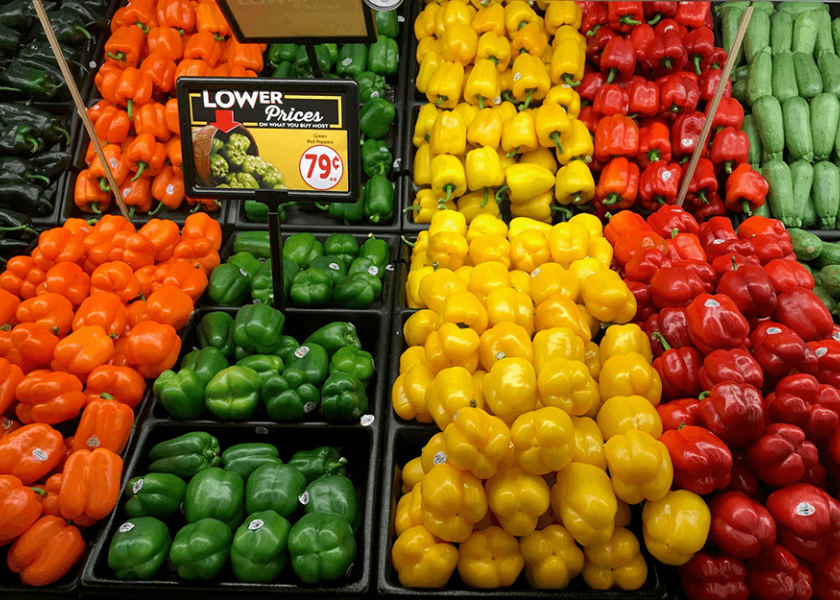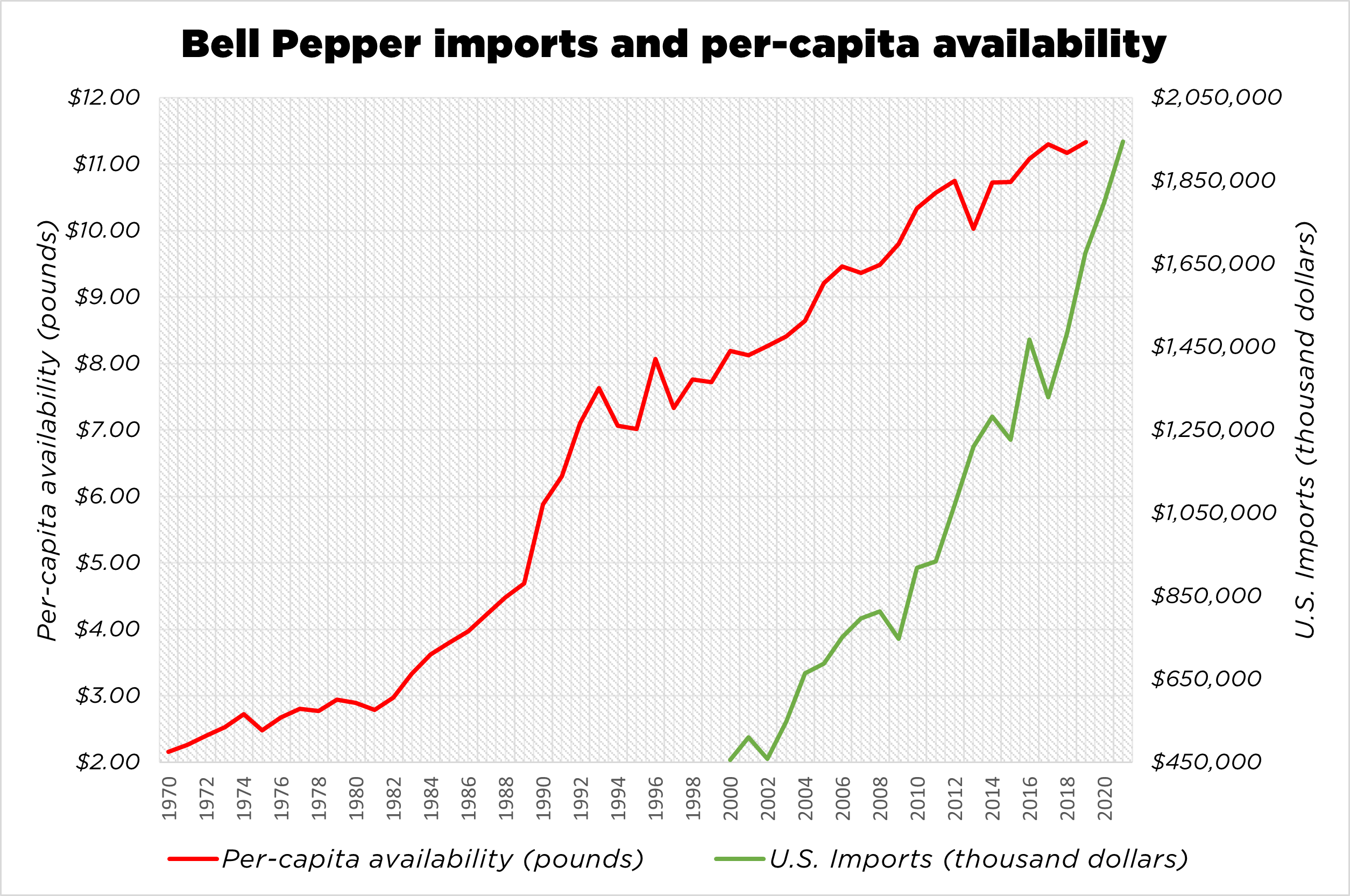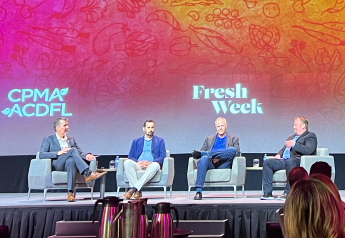Fresh bell pepper per-capita consumption keeps climbing

A rising tide of demand is lifting the bell pepper boat.
Per-capita availability of fresh bell peppers has increased fivefold since 1970, according to USDA statistics, and the long-term rise in consumption doesn’t show signs of stopping.
The USDA said farm-level, per-capita availability in 1970 was just 2.16 pounds per person, rising to 2.89 pounds by 1980, 5.88 pounds by 1990, 8.19 pounds by 2000, 10.33 pounds by 2010 and 11.33 pounds in 2019.

The extra bell pepper supply doesn’t appear to be coming from the U.S.
The acreage of bell peppers grown in the U.S. has declined in recent years, according to the USDA.
The acreage of bell peppers in the U.S. was 31,200 acres in 2021, down from 34,100 acres in 2020, off from 40,900 acres in 2015 and down from 46,400 acres in 2011, according to USDA statistics.
Instead, imports of bell peppers have helped fuel the growth in consumption, according to USDA trade numbers.
The percentage of the U.S. fresh bell pepper crop accounted for by imports rose from 33.8% in 2000 to 46.92% in 2005, 53.3% in 2010, 59.28% in 2015 and 70.51% in 2020.

The value of U.S. bell imports has more than tripled since 2000, according to USDA trade numbers.
U.S. imports of bell peppers rose from $455.7 million in 2000 to $917.4 million in 2010, $1.22 billion in 2015 and topping $1.94 billion in 2021.
Mexico accounted for 74% of total U.S bell pepper imports in 2000, and that share of imports increased to 78% by 2021.
Canada is the second-largest supplier of bell peppers to the U.S. and accounted for 19% of total U.S. imports in 2021, up from 11% in 2000. Other global suppliers of bell peppers to the U.S. market include the Dominican Republic, Honduras, Guatemala, the Netherlands, Israel and El Salvador, according to the USDA.







